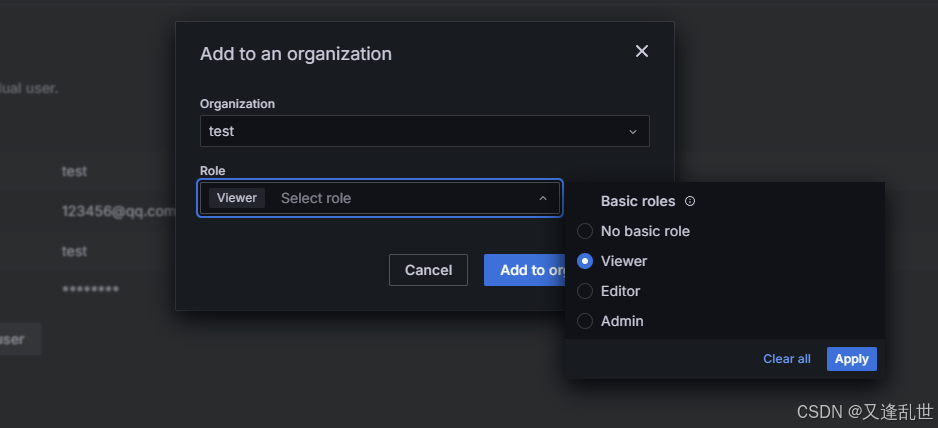论文网址:Federated learning for medical image analysis: A survey - ScienceDirect
英文是纯手打的!论文原文的summarizing and paraphrasing。可能会出现难以避免的拼写错误和语法错误,若有发现欢迎评论指正!文章偏向于笔记,谨慎食用
目录
1. 省流版
1.1. 心得
2. 论文逐段精读
2.1. Abstract
2.2. Introduction
2.2.1. Related surveys
2.2.2. Searching and analysis process
2.3. Background
2.3.1. Motivation
2.3.2. Problem formulation of federated learning
2.3.3. Typical process of federated learning
2.3.4. Types of federated learning
2.4. Federated learning for medical image analysis
2.4.1. Methods overview: A system perspective
2.4.2. Client-end learning
2.4.3. Sever-end learning
2.4.4. Client–server communication
2.5. Software platforms and tools
2.6. Medical image datasets for federated learning
2.6.1. Medical image data usage overview
2.6.2. Brain images
2.6.3. Chest/lung/heart images
2.6.4. Skin images
2.6.5. Others
2.7. Experiment
2.7.1. Experimental setup
2.7.2. Result and analysis
2.8. Discussion
2.8.1. Challenges of federated learning for medical image analysis
2.8.2. Future research directions
2.9. Conclusion
4. Reference
1. 省流版
1.1. 心得
(1)不太了解联邦学习在医学影像应用的可以读,不然不算是非常有深度的文章。可以当看个小科普。熟悉联邦学习的估计在这里面找不到新的idea和文章
2. 论文逐段精读
2.1. Abstract
①Conundrum in machine learning (ML): scarcity of samples
②Solving method: federated learning (FL)
③3 aspects of FL: client end, server end, and communication techniques
2.2. Introduction
①Privacy which limits the sharing between sites: Health Insurance Portability and Accountability Act (HIPAA) and General Data Protection Regulation (GDPR)
②FL in medical image field:

intractable adj. 棘手的;很难对付(或处理)的
2.2.1. Related surveys
①Papers covered: from 1 January 2017 to 31 October 2023
②Chapters/content included: Software Platforms, Experimental Study, Future Direction and New Arisen Problems, Different Perspective and Organization
2.2.2. Searching and analysis process
①Introducing how the selected papers and the chapters arrangement of this work
②Collected/contained papers:

2.3. Background
2.3.1. Motivation
(1)Privacy protection in medical image analysis
①Violating privacy protection laws may result in high fines for hospitals and institutions
(2)Challenges of medical image analysis
①Limited sites/data
②Class imbalance
③Population statistics and distribution differences
skew v.歪斜;偏离;歪曲;曲解;影响…的准确性;使不公允 n.斜交;扭曲;斜砌石;歪轮 adj.弯曲的;歪的;曲解的;误用的
2.3.2. Problem formulation of federated learning
①There are sites with there own datasets
②Defining the sharing model as and the local model as
2.3.3. Typical process of federated learning
(1)Client Selection and Initialization: including specific clients
(2)Local Training: advanced local training
(3)Model Upload: only update/share weights to sever
(4)Aggregation: different strategy
(5)Broadcast: synchronous update
(6)Iteration and Convergence: synchronous update
(7)Deployment: compatibility with existing hospital systems, integration challenges, and user adoption hurdles
2.3.4. Types of federated learning
(1)Horizontal federated learning
①Equals to homogeneous federated learning
②Different medical institutions hold medical imaging data of different patients
(2)Vertical federated learning
①Namely heterogeneous federated learning
②Different institutions have different types of data for the same group of patients
2.4. Federated learning for medical image analysis
2.4.1. Methods overview: A system perspective
①Overview:

2.4.2. Client-end learning
(1)Client end: Domain shift among clients
①Distribution in different sites:

②Domain-specific learning: fine-tune global model by data in clients
③Domain adaptation: align distribution differences
④Image harmonization: image-to-image translation model
(2)Client end: Limited data and labels
①Constract learning: distinguish between similar and dissimilar data
②Multi-task learning: data augmentation
③Weakly-supervised learning
④Knowledge distillation: utilizing small student model to represent the bigger teacher model
⑤Data synthesis: generative model
(3)Client end: Heterogeneous environments (computation resource & data scale)
①Each sites needs different epoch to train cuz their scale of samples and the device are different:

2.4.3. Sever-end learning
(1)Sever end: Weight aggregation
(2)Sever end: Domain shift among clients
(3)Sever end: Client corruption/anomaly detection

2.4.4. Client–server communication
(1)Data leakage and attack
①Partial Weights Sharing: only employ feature extraction in local model ()
②Differential Privacy: noise added
③Attack and Defense: generate fake images
(2)Communication efficiency
①Dynamic weight aggregation
2.5. Software platforms and tools
(1)PySyft
(2)OpenFL
(3)PriMIA
(4)Fed-BioMed
2.6. Medical image datasets for federated learning


2.6.1. Medical image data usage overview
①Using different site directly
②Divided one dataset to several sub dataset
2.6.2. Brain images
(1)ADNI
(2)ABIDE
(3)BraTS
(4)RSNA brain CT
(5)UK Biobank
(6)IXI
2.6.3. Chest/lung/heart images
(1)CheXpert
(2)ChestX-ray
(3)COVID-19 Chest X-ray
(4)COVIDx
(5)ACDC
(6)M&M
2.6.4. Skin images
(1)HAM10000
(2)ISIC
2.6.5. Others
(1)Eye: Kaggle Diabetic Retinopathy (Retina)
(2)Abdomen: PROMISE12
(3)Histology: TCGA
(4)Knee: fastMRI
(5)MedMNIST
2.7. Experiment
①Dataset: T1 weight image of ADNI
| ADNI dataset contained | Total samples | AD | NC |
| ADNI 1 | 428 | 177 | 229 |
| ADNI 2 | 360 | 159 | 201 |
②Atkas: AAL 90
③Feature: mean gray matter volumes
④Dataset dividing: 80% for training and 20% for testing
⑤Cross validation: 5 fold
2.7.1. Experimental setup
①Compared models
| Traditional machine learning | Cross | train data on one client, test on other client |
| Single | train and test on each client respectively | |
| Mix | train data from all the client, and then test | |
| Popular FL methods | FedAVG | aggregate weights |
| FedSGD | aggregate gradients | |
| FedProx | Every client trains its own model with an additional proximal term (the coefficient μ is set to 0.1) |
②Figure:

2.7.2. Result and analysis
①Classification result:

2.8. Discussion
2.8.1. Challenges of federated learning for medical image analysis
(1)Data heterogeneity among clients: different scanner/scanning machine, patients distribution
(2)Privacy leakage/poisoning attacks
(3)Technological limitations: computing cost
(4)Long-term viability of FL-based medical image analysis
2.8.2. Future research directions
(1)Future research directions
(2)Multi-modality fusion for federated learning
(3)Model generalizability for unseen clients
(4)Weakly-supervised learning for federated learning
(5)Federated learning security: Attack and defense
(6)Blockchain and decentralization of federated learning
(7)Federated learning for medical video analysis
(8)Large-scale medical image benchmark for federated learning
(9)Model interpretability
(10)Real-world implementation and practical issues
2.9. Conclusion
Conclusion of this work
4. Reference
Guan, H. et al. (2024) 'Federated learning for medical image analysis: A survey', Pattern Recognition, 151. doi: Redirecting



















